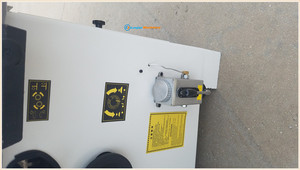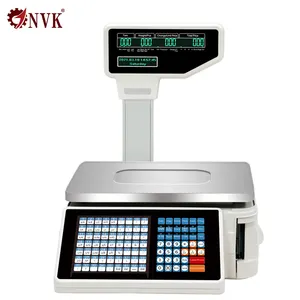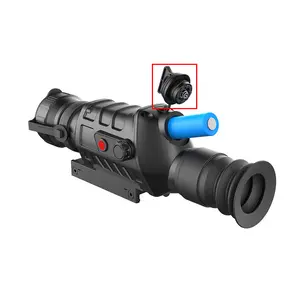Phổ biến trong ngành của bạn






Máy Chế Biến Gỗ Bán Chạy 2022 Máy Cưa Bàn Trượt Cắt MDF PVC Máy Cưa Gỗ Đồ Nội Thất Công Nghiệp
1.600,00 US$ - 1.800,00 US$
Đơn hàng tối thiểu: 1 Bộ
Vận chuyển mỗi chiếc: 1.000,00 US$







Trung Quốc 45/90 độ chế biến gỗ trượt bảng Saw Độ chính xác Bảng điều chỉnh Saw
2.980,00 US$ - 3.250,00 US$
Đơn hàng tối thiểu: 1 Bộ







Trung Quốc nhỏ di động trượt bảng Bảng điều chỉnh Saw gỗ máy cắt chính xác trượt bảng Saw chế biến gỗ để bán
520,00 US$ - 580,00 US$
Đơn hàng tối thiểu: 1 Bộ
Vận chuyển mỗi chiếc: 3.000,00 US$







Tự động chính xác trượt bảng Bảng điều chỉnh Saw cho chế biến gỗ
5.300,00 US$ - 5.600,00 US$
Đơn hàng tối thiểu: 1 Bộ







Đồ Nội Thất Tủ Melamine Bảng Điều Khiển Saw Đôi Lưỡi Gỗ Cắt Trượt Bảng Saw Máy Cho Chế Biến Gỗ
269,00 US$ - 350,00 US$
Đơn hàng tối thiểu: 1 Bộ
Vận chuyển mỗi chiếc: 2.000,00 US$







MJ6128 Chế Biến Gỗ Chính Xác MDF Bảng Saw Trượt Bảng Saw Máy Cắt Gỗ
1.399,00 US$ - 1.999,00 US$
Đơn hàng tối thiểu: 1 Bộ
Vận chuyển mỗi chiếc: 8.500,00 US$






Bảng Điều Khiển Cưa Gỗ Chính Xác Cao MJ6132 MJ6130 MJ6128
Sẵn sàng vận chuyển
2.500,00 US$ - 2.700,00 US$
Đơn hàng tối thiểu: 1 Bộ
Vận chuyển mỗi chiếc: 157,61 US$






Độ Chính Xác Cao Mj6128 45 Độ 90 Độ Gỗ Ván Ép Melamine Cắt Trượt Bảng Điều Chỉnh Saw Bảng Saw Máy Cho Chế Biến Gỗ
999,00 US$ - 1.199,00 US$
Đơn hàng tối thiểu: 1 Bộ
Vận chuyển mỗi chiếc: 7.840,00 US$






Độ chính xác Bảng điều khiển Saw mj6128 chế biến gỗ máy móc
1.499,00 US$ - 1.999,00 US$
Đơn hàng tối thiểu: 1 Bộ






Máy Cưa Bàn Trượt Gỗ 3200Mm Máy Cưa Bảng Chính Xác Cắt Gỗ Máy Cưa Bàn Công Nghiệp Mj6128
1.800,00 US$ - 2.280,00 US$
Đơn hàng tối thiểu: 1 Cái
Vận chuyển mỗi chiếc: 129,22 US$






Chuyên Nghiệp Gỗ Ván Ép Melamine Cắt Chế Biến Gỗ Máy Móc Mj6128 Mj6130 Độ Chính Xác Bảng Điều Chỉnh Saw Trượt Bảng Saw Giá
1.050,00 US$ - 1.250,00 US$
Đơn hàng tối thiểu: 1 Bộ
Vận chuyển mỗi chiếc: 1.250,00 US$




Bàn Trượt Saw Để Bán MJ6128 Cnc Chính Xác Trượt Bảng Điều Chỉnh Saw Máy Chế Biến Gỗ
1.850,00 US$ - 2.100,00 US$
Đơn hàng tối thiểu: 1 Bộ
Các tìm kiếm liên quan:
bảng điều khiển cưa mj6130tzbảng điều khiển chính xác thấy mj6132tzbảng điều khiển ngang thấy mj 90ymj6132tz bảng điều khiển chính xác thấygỗ bảng điều khiển cưa mj6132tybảng điều khiển cưa mj6132tymj6138tya bảng ngang sawmj6232a bảng điều khiển thấymj6130 bảng điều khiển chính xác thấybảng điều khiển cưa mj 45ymj6128y chính xác bảng điều khiển thấybảng điều khiển cưa mj6128tzmj6132d bảng điều khiển thấymj6116tz bảng điều khiển cưatrượt bảng điều khiển thấy mj6130y





Mj6128 chế biến gỗ ván ép chính xác trượt bảng Saw Cưa Bảng Máy cắt Bảng điều chỉnh Saw
1.599,00 US$ - 1.699,00 US$
Đơn hàng tối thiểu: 1 Bộ






Mj6128 chế biến gỗ công nghiệp chính xác 2800mm gỗ cắt trượt bảng Bảng điều khiển đã thấy máy 4Kw (5.5KW)
2.500,00 US$ - 2.800,00 US$
Đơn hàng tối thiểu: 1 Bộ






Mj6128 Độ chính xác lớn Bảng trượt bảng gỗ cắt Saw Máy cưa slding bảng Bảng điều khiển Saw
1.500,00 US$ - 1.850,00 US$
Đơn hàng tối thiểu: 1 Bộ
Vận chuyển mỗi chiếc: 3.500,00 US$






Mj6128 Chất lượng cao Chế biến gỗ chính xác Bảng điều chỉnh Saw với giá tốt
890,00 US$ - 1.100,00 US$
Đơn hàng tối thiểu: 1 Bộ
Vận chuyển mỗi chiếc: 225,00 US$






Độ Chính Xác Cao 45 90 Độ Gỗ Máy Cắt Chế Biến Gỗ Thông Tư Saw Bảng Điều Chỉnh Trượt Bảng Điều Chỉnh Saw Máy
1.600,00 US$ - 1.900,00 US$
Đơn hàng tối thiểu: 1 Bộ






Máy Cắt Lưỡi Cưa Tấm Trượt Chính Xác Cao MWJ6128
6.650,00 US$ - 7.000,00 US$
Đơn hàng tối thiểu: 1 Đơn vị






Huanhao tốc độ cao Bảng điều khiển tự động Saw máy tính chùm Saw với CE chính xác trượt bảng Saw
1.700,00 US$ - 1.800,00 US$
Đơn hàng tối thiểu: 1 Bộ










Cưa Bàn Trượt 45 Độ 6132S Chất Lượng Cao Bảng Melamine Cnc Máy Cắt Gỗ 3200Mm Cho Tủ Đồ Gỗ
1.999,00 US$ - 2.600,00 US$
Đơn hàng tối thiểu: 1 Bộ






Chất Lượng Cao Độ Chính Xác Trượt Bảng Saw Cho Chế Biến Gỗ Dựa Bảng Điều Chỉnh Saw Máy Cắt Xách Tay Đồ Nội Thất Cắt Maker
2.500,00 US$ - 2.600,00 US$
Đơn hàng tối thiểu: 1 Bộ












Máy cắt gỗ chính xác trượt bảng Bảng điều khiển máy cưa
2.800,00 US$ - 4.500,00 US$
Đơn hàng tối thiểu: 1 Đơn vị
Vận chuyển mỗi chiếc: 3.000,00 US$






KINCNC Cưa Ván Trượt Di Động Cưa Bàn Cắt Nhôm Pallet Để Cắt Gỗ Mdf
1.500,00 US$ - 2.000,00 US$
Đơn hàng tối thiểu: 1 Bộ
Vận chuyển mỗi chiếc: 10,00 US$






MJ6128-90 chế biến gỗ Panel Saw trượt bảng Saw Máy gỗ máy
1.400,00 US$ - 1.422,00 US$
Đơn hàng tối thiểu: 1 Cái






ZHONGDING ALTENDORF Ván Ép Cắt Gỗ Làm Việc Cắt Bảng Ngang Cưa Máy Bàn Trượt
2.500,00 US$ - 2.600,00 US$
Đơn hàng tối thiểu: 1 Bộ












Bàn Trượt Bảng Điều Chỉnh Saw Máy Cắt Chính Xác 3.2M MJ6132 MJ6130 MJ6128
Sẵn sàng vận chuyển
2.300,00 US$ - 2.500,00 US$
Đơn hàng tối thiểu: 1 Bộ
Vận chuyển mỗi chiếc: 157,60 US$






Mj6128 gỗ ván ép MDF Melamine nhôm cắt dọc Bảng điều khiển Saw độ chính xác cao trượt bảng đã thấy máy cho chế biến gỗ
1.350,00 US$ - 1.599,00 US$
Đơn hàng tối thiểu: 1 Bộ






MJ6128 Công Nghiệp Chế Biến Gỗ Chính Xác Cắt Gỗ Bảng Điều Chỉnh Trượt Saw Machine
1.600,00 US$ - 2.200,00 US$
Đơn hàng tối thiểu: 1 Bộ






Trượt bảng Saw để bán mj6128 CNC chính xác trượt bảng Bảng điều khiển Saw Máy chế biến gỗ
1.799,00 US$ - 2.099,00 US$
Đơn hàng tối thiểu: 1 Bộ






MJ6128 Trượt Bảng Điều Chỉnh Saw Gỗ Máy Làm Việc Chính Xác Single Phase Acrylic Giá
Sẵn sàng vận chuyển
1.530,00 US$
Đơn hàng tối thiểu: 1 Bộ
Vận chuyển mỗi chiếc: 5.020,00 US$






Mj6128 Chế Biến Gỗ Chính Xác MDF Bảng Điều Chỉnh Saw Trượt Bảng Saw Gỗ Máy Cắt
2.550,00 US$ - 2.700,00 US$
Đơn hàng tối thiểu: 1 Cái
Vận chuyển mỗi chiếc: 1.134,00 US$






Mj6128 chế biến gỗ ván ép cắt bảng cưa gỗ chính xác trượt bảng đã thấy máy
1.500,00 US$ - 1.850,00 US$
Đơn hàng tối thiểu: 1 Bộ
Vận chuyển mỗi chiếc: 3.500,00 US$






Độ chính xác cao mj6128 trượt bảng Bảng Saw gỗ máy làm việc
1.062,88 US$ - 1.121,34 US$
Đơn hàng tối thiểu: 1 Bộ
Vận chuyển mỗi chiếc: 225,00 US$






MJ6128 Chế Biến Gỗ Bảng Điều Khiển Đã Thấy Máy cho Thợ Mộc Làm Đồ Nội Thất
1.496,00 US$
Đơn hàng tối thiểu: 1 Bộ






Chất Lượng Cao Giá Thấp Chính Xác Tự Động Planer Chế Biến Gỗ Cắt Trượt Bảng Điều Chỉnh Đã Thấy Máy Xbd-mj6128
1.490,00 US$ - 1.614,00 US$
Đơn hàng tối thiểu: 1 Bộ
Các danh mục hàng đầu
Giới thiệu về bảng điều khiển chính xác thấy mj6128
bảng điều khiển chính xác thấy mj6128 được sử dụng để phát hiện các tạp chất kim loại vô tình lẫn vào sản phẩm trong quá trình sản xuất. Các chất gây ô nhiễm này thường có xu hướng cản trở chất lượng và tiêu chuẩn của các sản phẩm đó .. bảng điều khiển chính xác thấy mj6128 tìm thấy tiện ích của chúng trong việc tìm kiếm các vật kim loại dưới lòng đất. Các cảm biến hiện diện trong những. bảng điều khiển chính xác thấy mj6128 bắt đầu chỉ báo bằng tiếng bíp hoặc bằng chuyển động của kim khi chúng nằm trong phạm vi quy định của các kim loại này.
Điều này làm cho ứng dụng của. bảng điều khiển chính xác thấy mj6128 trong các bộ quốc phòng và quân đội, đặc biệt nổi bật trong việc phát hiện chất nổ .. bảng điều khiển chính xác thấy mj6128 được sử dụng rộng rãi trong khảo cổ học để tìm các thi thể kim loại được giấu kín. Danh sách các tiện ích của. bảng điều khiển chính xác thấy mj6128 thực sự dài và những sản phẩm này chắc chắn là một trong những cải tiến tốt nhất.
Quan trọng nhất, chúng giúp loại bỏ các chất ô nhiễm kim loại không mong muốn trong ngành công nghiệp thực phẩm. Với sự giới thiệu của. bảng điều khiển chính xác thấy mj6128, việc xử lý độc tố kim loại có trong các sản phẩm thực phẩm đã trở nên cực kỳ đơn giản. Việc sử dụng. bảng điều khiển chính xác thấy mj6128 đã bắt đầu bằng ứng dụng của chúng trong khảo sát khoáng sản và các ứng dụng công nghiệp khác. Gần đây,. bảng điều khiển chính xác thấy mj6128 được sử dụng trong hầu hết các ngành công nghiệp chính do những lợi ích khác nhau của chúng.
Hãy đến và khám phá danh mục sản phẩm đa dạng có sẵn tại Alibaba.com để phân biệt. bảng điều khiển chính xác thấy mj6128 chắc chắn sẽ nằm trong tầm tay của bạn. Khi sự đổi mới như thế này có sẵn để giảm bớt nỗ lực của bạn, tại sao lại phải trì hoãn việc thực hiện. Sterling cung cấp mua số lượng lớn có sẵn cho các nhà cung cấp và nhà bán buôn.
Điều này làm cho ứng dụng của. bảng điều khiển chính xác thấy mj6128 trong các bộ quốc phòng và quân đội, đặc biệt nổi bật trong việc phát hiện chất nổ .. bảng điều khiển chính xác thấy mj6128 được sử dụng rộng rãi trong khảo cổ học để tìm các thi thể kim loại được giấu kín. Danh sách các tiện ích của. bảng điều khiển chính xác thấy mj6128 thực sự dài và những sản phẩm này chắc chắn là một trong những cải tiến tốt nhất.
Quan trọng nhất, chúng giúp loại bỏ các chất ô nhiễm kim loại không mong muốn trong ngành công nghiệp thực phẩm. Với sự giới thiệu của. bảng điều khiển chính xác thấy mj6128, việc xử lý độc tố kim loại có trong các sản phẩm thực phẩm đã trở nên cực kỳ đơn giản. Việc sử dụng. bảng điều khiển chính xác thấy mj6128 đã bắt đầu bằng ứng dụng của chúng trong khảo sát khoáng sản và các ứng dụng công nghiệp khác. Gần đây,. bảng điều khiển chính xác thấy mj6128 được sử dụng trong hầu hết các ngành công nghiệp chính do những lợi ích khác nhau của chúng.
Hãy đến và khám phá danh mục sản phẩm đa dạng có sẵn tại Alibaba.com để phân biệt. bảng điều khiển chính xác thấy mj6128 chắc chắn sẽ nằm trong tầm tay của bạn. Khi sự đổi mới như thế này có sẵn để giảm bớt nỗ lực của bạn, tại sao lại phải trì hoãn việc thực hiện. Sterling cung cấp mua số lượng lớn có sẵn cho các nhà cung cấp và nhà bán buôn.






















